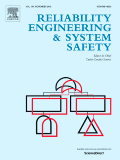Research paper accepted by Reliability Engineering and Systems Safety
Safety assurance is of paramount importance in the air transportation system. In this paper, we analyze the historical passenger airline accidents that happened from 1982 to 2006 as reported in the National Transportation Safety Board (NTSB) aviation accident database. A four-step procedure is formulated to construct a Bayesian network to capture the causal relationships embedded in the sequences of these accidents. First of all, with respect to each accident, a graphical representation is developed to facilitate the visualization of the escalation of initiating events into aviation accidents in the system. Next, we develop a Bayesian network representation of all the accidents by aggregating the accident-wise graphical representations together, where the causal and dependent relationships among a wide variety of contributory factors and outcomes in terms of aircraft damage and personnel injury are captured. In the Bayesian network, the prior probabilities are estimated based on the accident occurrence times and the aircraft departure data from the Bureau of Transportation Statistics (BTS). To estimate the conditional probabilities in the Bayesian network, we develop a monotonically increasing function, whose parameters are calibrated using the probability information on single events in the available data. Finally, we develop a computer program to automate the generation of the Bayesian network in compliance with the XML format used in the commercial GeNIe modeler. The constructed Bayesian network is then fed into GeNIe modeler for accident analysis. The mapping of the NTSB data to a Bayesian network facilitates both forward propagation and backward inference in probabilistic analysis, thereby supporting accident investigations and risk analysis. Several accident cases are used to demonstrate the developed approach.


